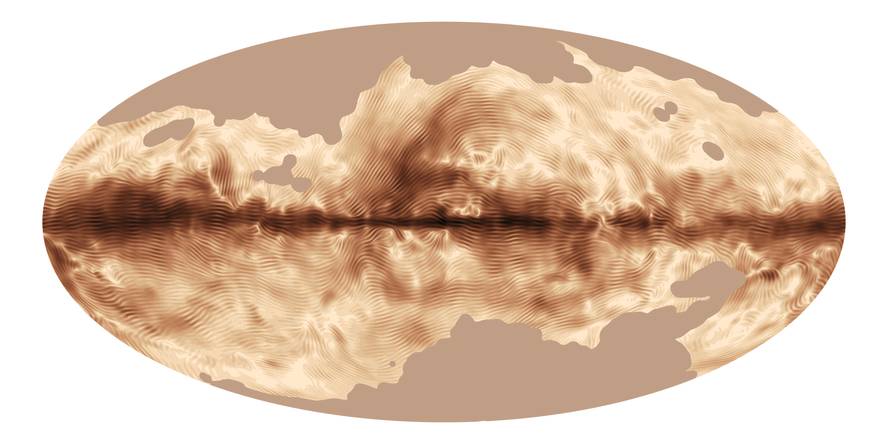Magnetic footprint of the Milky Way
This is the aspect of the Milky Way magnetic field in the eyes of the ESA's Planck satellite. The ESA has published today the image under the title “Magnetic Footprint of our Galaxy” and, although it easily seems like a fingerprint, the trailers, spirals and arches of the image show something more: what is seen is the structure of the magnetic field of our galaxy.
To complete the image, the Planck satellite has measured the polarized light emitted by the interstellar dust of the Milky Way (it is the first time that an observation of this type is made for the whole sky) and has represented the magnetic field of the galaxy by means of a technique called LIC.
In the darker zones the polarized emission is stronger, while the stripes indicate the direction of the magnetic field (projected relative to the plane of the sky). Finally, the dark horizontal band that goes from side to side corresponds to the plane of the galaxy. Here the polarization has a very regular pattern, since the magnetic field lines are mainly parallel to the plane of the Milky Way.
Measuring the characteristics of the polarized light emitted by interstellar dust, astronomers can investigate the phenomenon that has led to this polarization: in particular, they can know the existence of magnetic fields in the environment that has crossed the light and its properties.
In this case, the ESA has completed the map for the Milky Way, but in reality it is not the main objective of the Planck mission. The ESA launched the Planck satellite to find evidence of the gravitational waves after the Big Bang, that is, to detect the traces of these gravitational waves in the microwave background radiation: Polarizations type B. In fact, BICEP2 astronomers first detected these tracks last March, and astrophysicists expect Planck's results to confirm their discovery.







